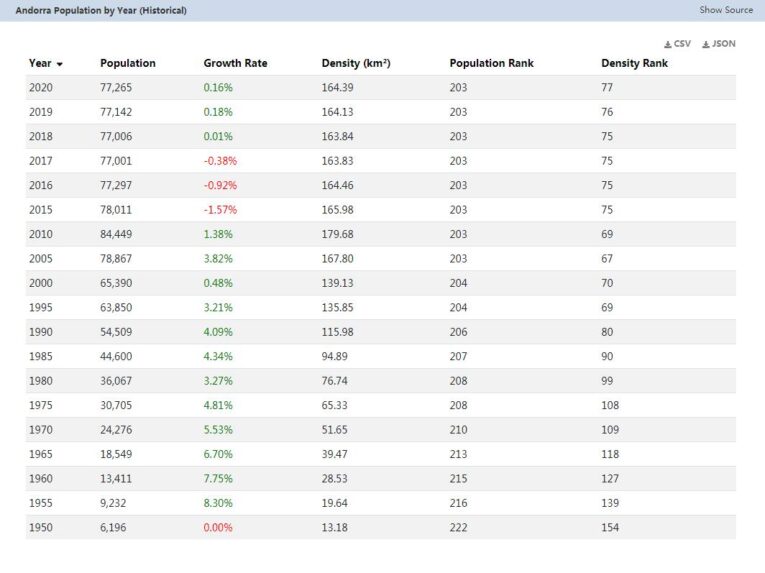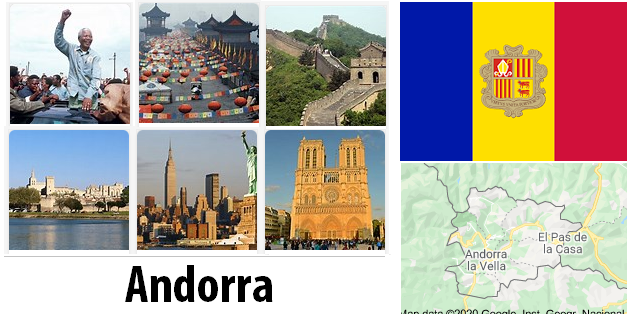In the period in which they had to support the struggles against the Saracens, the Frankish kings in the north east of Spain founded small counties which, all together, were called “Spanish Brand”, and occupied the territory where Andorra is currently located, between the France and Spain. However, the founding of the state dates back to Carlo il Grosso in the 9th century, at the time of the Carolingians.
The name of Andorra also appeared in the documents relating to the consecration of the Church of Urgel, under the joint protectorate of a Bishop and the kings of the Franks, which took place in 819 under the reign of Ludovico I, known as Pius, son of Charlemagne.
The Urgels were nobles under whose jurisdiction Andorra was ruled; in reality they were only the owners of the territory since the real power was managed by the bishop. And the bishop, having to defend himself not only from the ambition of the neighboring lords, but also from the somewhat rebellious population, not having its own militia, asked for protection to the Caboet family. See Countryaah for population and country facts about Andorra.
This period in the history of Andorra was documented, on repeated occasions, throughout the twelfth century, by all those who from 1110 onwards, after William Guitado de Caboet, declared themselves vassals of the bishop.
All the inhabitants of Andorra, divided into thirty in each parish, obeyed the bishop from the beginning of the thirteenth century. One of these bishops, Ponzio de Villamet, in 1231 worked hard to give Andorra a first political and judicial administration.
In 1278 a treaty was signed between the Counts of Foix, owners of the town, and the bishop of Urgel, which established the rights of each of the two parties; that the tributes, for the most part, had to be assigned to the accounts, which could keep a vicar to represent them; that administration was to be exercised equally by both contractors; that the Counts of Foix, in their own name and their descendants, recognized that they received the fiefdom from the Church of Urgel and therefore would always pay homage to the bishop.
All this was ratified, signed and published in Urgel on 7 September. Among the underwriters there was also King Peter of Aragon. This sentence was further confirmed in 1288 by Pope Martin V. The rights of the Counts of Foix later passed to the princes of Bearn and Navarre and, from these provinces, were long exercised.
In 1505 Germana di Foix married Ferdinand the Catholic but, not even with this marriage, the rights of Andorra passed to Spain, as no children were born from the marriage. Therefore they returned to the d’Albret, who were the kings of Navarre. Thus Henry of Navarre, who ascended the throne of France with the name of Henry IV, automatically had Andorra under his command with all the other domains of the Counts of Foix. And this was promulgated with an edict in 1607.
During the known revolution the French did not want to accept taxes from Andorra or condominiums with it, but when Napoleon took power, the primitive situation was restored.
Throughout the 20th century, Andorra was ruled as a fiefdom and lord. Sovereignty was always the prerogative of both parties to the pact of 1278; one or the other, on their own, could never bring about judicial reforms or grant graces or pardon.
The supreme body of public law was called in several ways, “Concell de la Terra”, “Concell de la Vall”, “Concell de 24”. The latter referred to the fact that the members of the parishes were 24, distributed in 4 for each parish.
This Council, established as early as the thirteenth century, saw the 24 members of the City Council elected before 1866, while later directly by the heads of the family.
The main administrative powers of this council were jurisdiction and economic power across the country. But he could not exercise legislative power.
In addition to the City Council there were also the Council of Parishes and the “guart”, the administrative body in charge of managing municipal assets.

